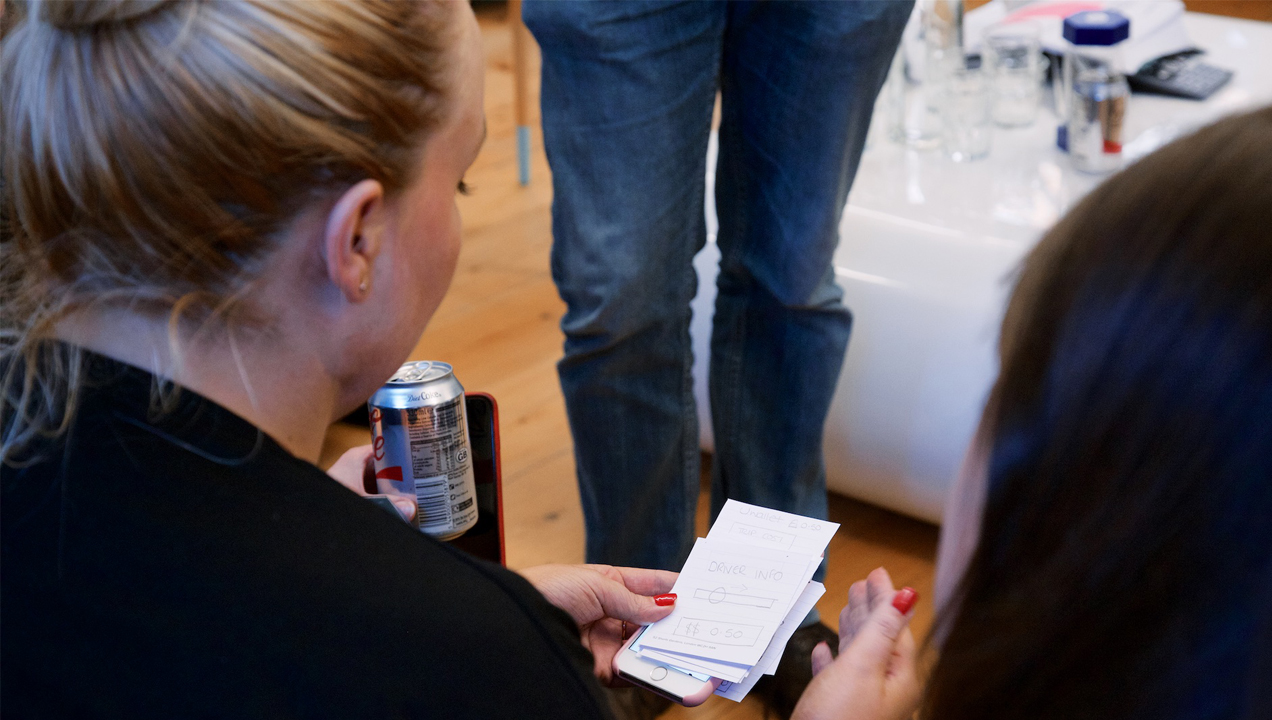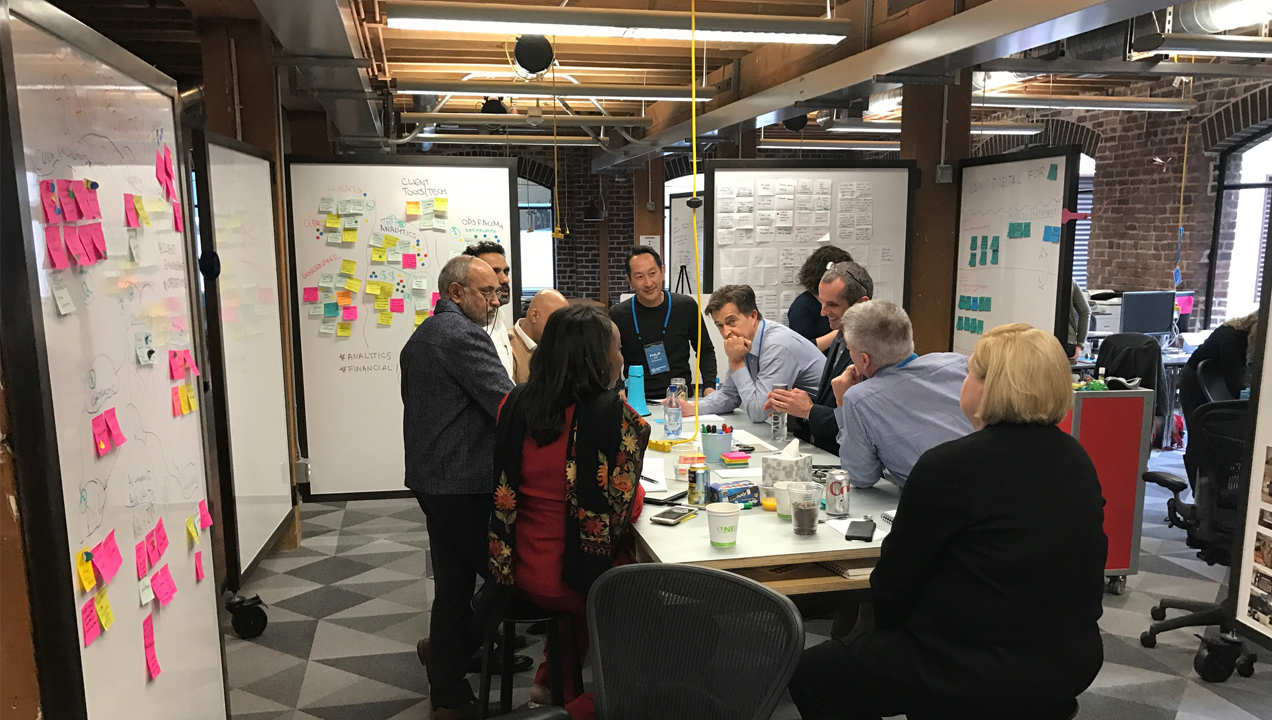Design thinking from the trenches
Smart companies are pivoting quickly to not miss the design thinking train. At Sutherland, we aim to be change makers for not only our clients but for their customers too. In the Labs we are working with leading brands to improve everyday experiences. A stepping stone to build a design driven culture, keeping the customers at the forefront of any problem we aim to solve.

To ensure that design is the foundation of our future, our team has been rolling out Design Thinking training for our executives to equip them with the skills to become Design Thinking advocates. In each training session, we brought together diverse groups from across the organization, which were split into teams and coached by one of our experts. The coach’s role was to facilitate, guide and answer any questions or concerns the teams might have. Over 2 days, the training took the format of a mini design sprint, taking teams from research and observation of users, to problem identification, to designing a solution, to pitching a basic concept to a panel of judges.
I’ve personally learned a lot as a coach, and am verifying or debunking 5 statements on communicating and facilitating a Design Thinking process to non-designers.
Collaboration comes naturally as part of Design Thinking process: False
As design thinkers we take it for granted that everyone works, or at least believes in working, collaboratively. Collaboration is not an innate skill, and we were reminded of this during the training. Although collaboration is a key part of the process, it is not automatic. For example, we noticed in several instances that one participant would break away from their team to create his/her own presentation template. This effectively steered the shape of the final deliverable from a team conversation to an individual’s point of view.
Teamwork helps leverage collective experience and expertise to strengthen the project, while individual effort can restrict that (I don’t mean to disparage individual effort, the same is also valuable in relevant scenarios). As facilitators, it is important to recognize that collaboration isn’t automatic, and make sure the team is steered to at least communicate what’s on their mind for everyone to be on the same page.
Talking to users creates “Eureka!” moments: True
You can’t know what users want without talking to them. Users themselves might not even know what they want. “Aha” and “Eureka!” moments are created through conversations, observations and open-ended questions to identify the gaps that exist. Once a pattern of 1–2 challenges emerges from multiple interviews, it’s easier to brainstorm and come up with a viable solution based on real problems. As coaches, it was important to encourage our teams to be open to unexpected insights.
As an example, one team had fleshed out a detailed concept that responded to every challenge they came across during their research. They thought that they had the perfect solution until they tested it with real users. Testing helped them realized there were too many bells and whistles. They realized it was better to start with solving one key challenge. Had they not tested their prototype with users, they wouldn’t know what the users really want. Their efforts paid off, they ended up winning the pitch!

Frameworks don’t need any rules: False
As a facilitator, it’s important to have a grounding in several design frameworks, but it’s even more important to know when and where to use them. Introducing and explaining many different frameworks at the beginning will unnecessarily confuse your trainees. The trick is to understand the value of each framework and when they should be introduced into the process.
My team won twice, and I attribute that to great coaching of course, (talk about being humble) but also to the fact that I had a list of frameworks handy to introduce when needed. Simon Sinek’s elevator pitch was helpful to share during the presentation creation phase. With only 5 minutes to present, an elevator pitch can be very effective to articulate a concept in 20–30 seconds. I shared the Business Model Canvas when the team was fleshing out their concept. Though they didn’t fill out the canvas, keeping the key categories in mind helped them pose the right questions to cover all the bases.
It’s not all about you!: True
As a facilitator, it is important to give up your perspective on how things should be. You might be a user too, but your view does not necessarily provide an optimal solution, neither does it help your team learn from their own (necessary) failures. We all know it’s important to fail fast and learn from it. Having said that, don’t let your team completely fail just to let them learn. Pick the right moments to let the group walk down the wrong path before pulling them back in the direction. Remember, you are a facilitator. This isn’t about your solution but more about your guidance to take the team to a successful solution.
As an example the team from example 2, the very detailed concept, took that solution to test with users. As a facilitator, I could have stopped them at the start or pushed them down a different route. However, in this instance, I let them test it out. I let the users inform them that more bells and whistles was not the way to go. This helped them nail their final concept and presentation using good user feedback.
It’s important to have a “hook” to engage your audience: True
It was challenging to have the training participants walk in the users’ shoes, but an equal challenge was to have them change perspective and put their feet in the shoes of the panel of judges. Taking what they had learnt and putting it into a story to present was clearly the most challenging part. How could they make sure the judges were engaged every part of the pitch? Make sure to have a “hook”- something that will grab the audience’s attention. It can be completely unrelated that somehow ties back to the concept. Whether a skit with some humor or a powerful image or video at the start of the presentation, use props or even involve the audience to do something. Our training showed that these were elements that took the presentations to the next level.
Lastly, Have fun!! This might be the most important part of facilitating an effective Design Thinking process. Embrace Design Thinking, believe in it’s potential, know it’s effectiveness, and don’t be afraid to fail.
Thanks to Shauna Jin for her assistance and critical eyes on this post!
First published on Medium by @akritivora
